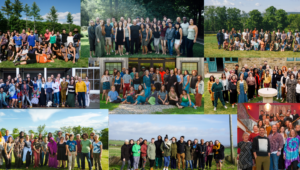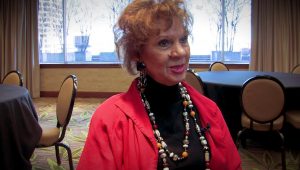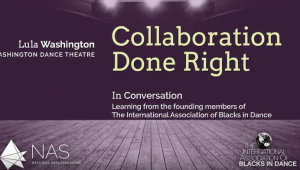In physics a lever amplifies an input force to provide a greater output force. That lever pivots on a fulcrum and where you place that fulcrum makes all the difference. As does finding the right lever, ideally one that produces no friction.
To think about this in terms of nonprofits, the fulcrum could be seen as your programs. You put your effort into levers that pivot on those programs to affect outcomes (move mountains). This concept of leverage is all about how with the right position and alignment of effort even the smallest of entities can exert incredible force. If your programs are not aligned with your strategy, then you will waste a great deal of energy, fail to achieve your outcomes… or both.
I got a lesson in this organizational physics on a recent visit with Laura Zabel, executive director of Springboard for the Arts. In talking with her about her organization two things stood out. The first is the scale of the work they tackle: artists’ access to healthcare, the support and distribution of new work and turning a six-mile construction site into a fun, community-building experience (more on that in a bit). The second thing that stood out is the how each of their initiatives seems like the perfect realization of Springboard’s strategy.
While you might be tempted to refer to them as a service organization for artists, Springboard for the Arts defines itself as an economic and community development organization, and that distinction is an important one. They do provide artists with skills, information and services, but their ultimate goal is to build stronger communities, neighborhoods and economies. And, Springboard believes that artists are an important leverage point in that work.
Leverage figures quite prominently in Springboard’s culture. Their focus on community development and the relationships they’ve built to that end (they have a bona fide community organizer on the staff) has established Springboard as a real player in Minnesota, and they leverage that position to take on big projects.
But perhaps the most important lesson is how Springboard leverages their staff. They are a small but passionate team, driven by nine key principles:
- Artists are assets
- By artists for artists
- The broadest definition of who is an artist
- More is more
- Equity = vibrant communities
- Reciprocal relationships
- Cross-sector collaborations that last
- Boldness and creativity
- Real Half & Half
These principles define Springboard’s internal culture and outline their strategy – focused on the artist (not their work), relationship-building, working collaboratively across boundaries and seeing possibilities everywhere. Armed with these principles, the board and staff have a clear sense of what is aligned and what is not. They know what programs are a good fit – where to place that fulcrum in order to get the greatest outcome from their efforts. They also know what levers will produce the least friction. This clarity empowers everyone and enables the organization to quickly assess and act on potential partnerships and opportunities.
This brings me to those six miles of construction and Irrigate, a creative placemaking initiative spearheaded by Springboard. This artist-led effort spans the light rail construction project running through the cities of Saint Paul and Minneapolis, Minnesota. Springboard trains and mobilizes local artists to collaborate with businesses, organizations and community groups to “change the landscape of the corridor with color, art, surprise, creativity and fun.” The project’s goals are to help local artists to make positive physical, economic and social impact in the communities affected by the light rail construction. Irrigate also seeks to develop and invest in permanent local resources and infrastructure that will attract artists and give them a role and a long-term stake in those communities.
When Zabel and her team saw this multi-year infrastructure project threatening to disrupt businesses and cut off neighborhoods in their community, they saw transformational possibility. They found the partners and built this mountain of an initiative, Irrigate, relatively quickly. How? Those seven key principles made explicit what strategic alignment looked like. They helped frame the challenge as an opportunity. They told them with whom they should work (what levers to use) and how to approach the issue. They gave them the confidence to make the leap into such a large endeavor.
What are the key principles that will help you align your staff and programs? What are the levers that will help move your mountains?


